Municipalities and companies all across Germany are using renewable energy. They are almost completely independent of traditional energy suppliers. Visiting three inspiring projects: local heating network in Büsingen, block-type thermal power station at Westhof Bio, use of geothermal heat at Wipotec.
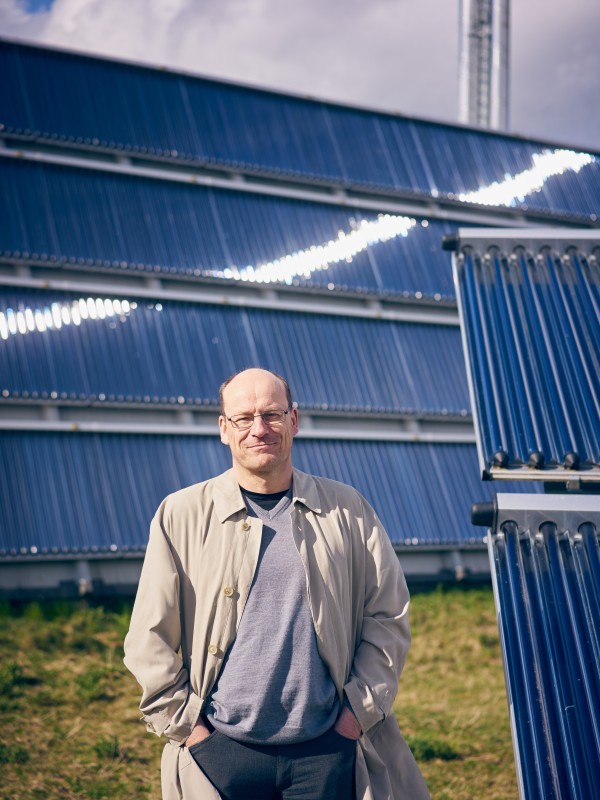
Energy-Supplier
Ten villages and smaller cities will be provided with local heating networks in the next five years: that is the purpose of Bene Müller, one of the member of the Executive Board at Solarcomplex.
Local heating network supplied by solar power
The central heating system in Büsingen is located on a hillside meadow above the village. Solar thermal collectors are grouped around a concrete cube. Outside it is still cool, but the sun is shining and so it is a good day for Bene Müller. Inside the cube he points towards the screen of his laptop, which he uses to monitor the heating. "Look there: 12.6 degrees. And here: 77 degrees."
Mr Müller, one of the Executive Board members at Solarcomplex, wants to convince municipalities to construct local heating networks using renewable sources of energy. Days like this in March provide solid arguments. While the sun brings the ambient temperature up to just 12.6 degrees, its rays heat the vacuum tubes of the solar thermal collectors in such a way that the water temperature in the heating plant's storage tank is 77 degrees. Enough for heating and showering in the village.
Büsingen sits by the river Rhine between Schaffhausen and Lake Constance; it is surrounded by Switzerland and has 1,300 inhabitants. They pay their bills in Swiss francs, but their taxes in euros. Of all the complicated legislation in this German exclave, what matters here is that the German Renewable Energy Sources Act does not apply in Büsingen. When the community was in negotiations with Solarcomplex about the construction of a local heating network, one thing was clear: in contrast to its previous bio-energy villages, the company from Singen in Germany could not work with photovoltaic or biogas technology as this way of generating energy in Büsingen was not promoted by the state. This gave rise to the idea of using the sun to heat the hot water for the residents of Büsingen, the sun and a wood chip furnace. In the summer months, this is a benefit of the system in Büsingen, solar thermal energy is enough. The furnace, which is supplied only with untreated scrap wood from the surrounding region, is not used then.
Read more under the image gallery.
77 Degrees
In Büsingen, the power of the sun is used. Hot water flows from the solar thermal collectors to the storage tank of the heating plant, where 77 degrees Celsius has been measured even on a winter day.
14 villages and small towns with between 500 and 5,000 inhabitants have already had heating pipes installed by Solarcomplex. Another ten are set to join in the next five years, all from the region around Lake Constance. "Once I have the grid, I can adapt to any technology", says Mr Müller, "the grid is the decisive leap forward for the municipalities into a modern future." Whether the water is heated from industrial waste heat, or wind energy, or geothermal heat, or even from a fuel cell one day, makes no difference. You just need to convert the heating plant for this, not the grid. Mr Müller switches quickly into persuasion mode. He is a debate veteran from many public meetings, because Solarcomplex needs the approval of those who are to benefit from making the change. You could assume that Mr Müller had a technical or business administration background. Far from it. The 51-year-old studied history and worked in artistic fields. Solarcomplex was established in 2000 from the "Singener Werkstätten", a gathering of critics who believed that words about making a better world should also be followed up by action. They dedicated themselves to renewable energies. Mr Müller calls his company a "regenerative utility", which now has more than 1,000 shareholders, employs 40 people, and has turned a profit every year since 2003.
"Once I have the heating grid, I can adapt to any technology."
Markus Möll has been the mayor of Büsingen since 2012, the year in which the village received its local heating network. The project was "a positive story", he says. All public buildings are connected to the grid: the town hall, school, kindergarten, even the Alte Rheinmühle Restaurant and Hotel, which the village has leased out. The inclination of the locals to connect their houses to the grid rises, understandably, with the age of their heating systems. Those who have just bought a boiler will not want to disassemble it again straightaway. Mr Möll reveals that most of the Büsingen locals who have connected currently pay neither more nor less than they used to with their oil-fired heating in the basement.
The question raised most frequently at the town meetings is whether it is worth moving away from fossil fuels. "Environmental arguments only make a difference for 10 to 15 percent of the population", says Mr Müller from experience. A KfW loan ensures that the Solarcomplex investment is economically efficient. The Büsingen project for example cost EUR 3.75 million, roughly 75 per cent of which came from the KfW "Renewable Energies – Premium" programme. The repayment bonus is the clincher. Without it, says Mr Müller, "the financing simply would not work".
Renewable energy in an organic greenhouse
Rainer Carstens, 59, and Paul-Heinrich Dörscher, 49, run their heating with renewable energy, too. They have to keep the temperature cosily warm in one of their buildings all through the year, so they have built a block-type thermal power station immediately next to it. The building is the largest organic greenhouse in Germany, and is located in Wöhrden in the region of Dithmarschen, Schleswig-Holstein. In this area close to the North Sea coast, wind turbines fill the skyline, while cabbage and other types of vegetable grow particularly well in the fields. Mr Carstens and Mr Dörscher, the owners of the agricultural business Westhof Bio, however, also have their eye on a new market: organic tomatoes from Germany. Cultivated according to the criteria of the Bioland Association, and produced responsibly in terms of energy efficiency.
After years of planning, they dared to make the necessary EUR 12 million investment, because they had found a food chain, Edeka, which was willing to buy all of their organic tomatoes. Since 2013, the red fruit have been flourishing in the humid, warm climate of their organic greenhouse, covering an area of four hectares. The pickers gathered a harvest of 1,300 tonnes in 2014. The company has also been growing organic cucumbers and peppers since 2016.
All organic
Vegetable farm Westhof Bio relies on renewable energies. Impressions from the tomato hotbeds (KfW Group/MEHR+). This video is only available in German.
"Tomatoes really love light", says Mr Carstens. He is standing in the middle of a green jungle comprising 70,000 plants that wind their way up compostable strings. The walls and roof of the greenhouse, which is 255 metres long, 155 metres wide and 7 metres high, are made from particularly translucent glass. Here and there we find cardboard boxes, where the bumblebees from Holland "live" that pollinate the yellow flowers. Five of them produce five red tomatoes, each 100 grams, always one pound on each stem. That is the standard for organic products, too. In contrast to a conventional greenhouse, which Mr Dörscher estimates would yield another third in terms of crop volume, the Westhof tomatoes do not grow on rock wool but on clay soil. After the harvest, which begins in March and ends in November, the soil is prepared again.
There are of course many huge greenhouses in Germany, but only a few operate according to ecological criteria. The block-type thermal power station at Westhof runs on gas from the internal biogas plant. The residue from the station is used to fertilise the soil in the greenhouse, and the plant also provides the nitrogen that is important for growing tomatoes. The tomatoes are irrigated with rain water from a collection tank next to the greenhouse. Just like in Büsingen, Westhof financed their project using funds from the KfW "Renewable Energies – Premium" programme.
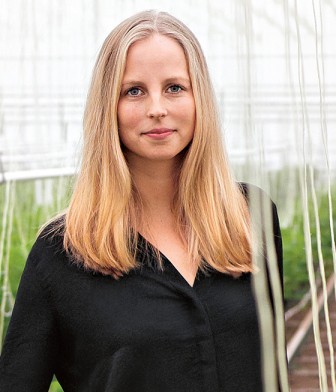
"The ecological concept plays a considerable role for our customers."
Every German eats on average 20 kg of tomatoes every year. Organic goods from Germany are rare and thus greatly in demand. “The ecological concept plays a considerable role for our customers”, says Maike Carstens, 31. Just like her three siblings, she also works in her parents' business. After training as a wholesale commercial agent and gaining a degree in Business Administration in Kiel and Hamburg, she is now responsible for sales and marketing. “I’ve always been interested in healthy eating”, she says. “We were taught that from a very young age.”
Her father was one of the pioneers of organic produce in the region. Rainer Carstens converted the Westhof, which he had taken on from his father in 1978, to organic agriculture in 1989. His neighbour, Mr Dörscher, whose family has worked in agriculture in Dithmarschen for over 150 years, looked on for a few years and first of all thought, “What is Rainer up to? No animals? He won’t have anything to do for the whole winter.” However, he himself noticed that he was having to spray more and more every year to maintain his yield. Mr Carstens and Mr Dörscher joined forces in 2002. Nowadays, they have about 1,000 hectares under the plough, which means that Westhof Bio is one of the largest organic vegetable producers in Germany. The business employs 110 workers, including 20 in the greenhouse, plus the same number of seasonal workers.
Agriculture is a cyclical form of economic activity and is dependent on the seasons. But Mr Carstens and Mr Dörscher also think in cycles from an energy perspective. Their objective is to achieve energy neutrality within the business. The Westhof generated all the energy that it consumed for the first time in 2014.Clover grass from their own fields and the waste from field production and the vegetable freezing plant provide the biogas for the block-type thermal power station. The exhaust heat from the freezing plant also helps to heat the greenhouse.
To their disappointment, the two farming strategists no longer sit on their tractors very often. Their love of the land and their profession remains. And the best part? "Perhaps", says Mr Dörscher, "when you go out into the fields on a spring evening, and see the young green tops of the carrots glowing in the low sun."
Heat energy from the earth warms the factory halls at Wipotec
If you were to listen to Theo Düppre, you might think he was a kindred spirit of the two farmers from Schleswig-Holstein. "We do not want to use fossil fuels any more", says the 66-year-old entrepreneur from Kaiserslautern, adding: "My goal is to become self-sufficient with heat and electricity."
Yet Saarland-born businessman Mr Düppre is not driven by environmental convictions. The founder and Managing Director of Wipotec, a world-leading provider of weighing technology, says: "I was attracted by the technological opportunity." Just like in his own company, which was established in 1988 and today employs 700 people, 550 of whom at the head office in Kaiserslautern. They produce weighing equipment for dynamic weighing processes, 2,000 devices per year. These ensure that consumers do not receive less than the packaging states, while producers do not give anything away for free either. Wipotec weighing technology is used in the food industry, the pharmaceutical industry and in logistics, among others. Per hour, for example, 21,000 packet soups or 44,400 wafers, or 400,000 medicine capsules. Or 14,400 letters.
"For me, geothermal energy is the energy source of the future”
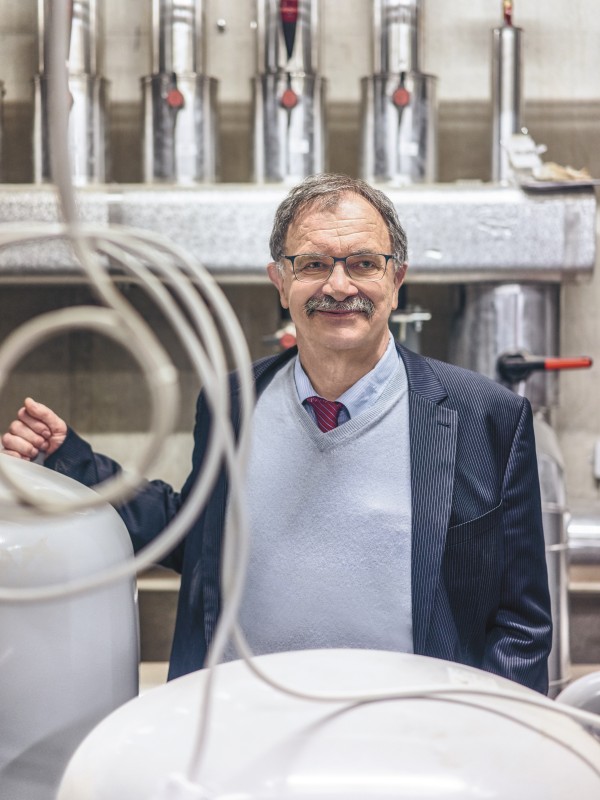
Tinkerer
Theo Düppre was not driven by environmental convictions, but by a fascination for the technological opportunities.
Eleven years ago, Mr Düppre, an engineer by profession and still developing weighing technology, discovered a new field of activity: renewable energies. Yet, bucking the trend, he did not focus on potential above the ground, like solar or wind energy, but instead went below the earth: "For me, geothermal energy at 1,500 to 1,800 metres below the surface is the energy source of the future." It seems expensive, but Mr Düppre hired a firm from the German state of Rhineland-Palatinate, which does without a large drilling rig for such medium-deep geothermal probes and gets by with a lorry as the platform. When looking for funding, Mr Düppre also stumbled upon KfW's "Renewable Energies - Premium" programme: "Without it, we wouldn't have achieved all this."
"All this", at Wipotec, is quite a bit. Beside one of the factory halls there is a concrete cover in the ground. Beneath it there is a pipe that goes 1,500 metres into the sandstone. There, the temperature is 56 degrees. Water flows down through a pipe, is heated, and then returns to the earth's surface at 30 degrees. This runs all of the underfloor heating that is installed in all of the buildings – across a total of 18,000 square metres.
The newest factory halls comply with the passive house standard and are lit using LEDs. Wipotec draws its electricity from a photovoltaic facility near the factory. Air channelled through stainless steel pipes into a rainwater tank warms or cools the factory halls, depending on the seasonAir channelled through stainless steel pipes into a rainwater tank warms or cools the factory halls, depending on the season. Solar thermal collectors on the roofs supply warm water. And under the parking spaces there is a "natural battery". 300 drill probes delve 25 metres into the sandstone. Energy that is not needed is diverted and stored there. And then there is the "little castle" in the municipality of Oberotterbach in southern Rhineland-Palatinate. There, Mr Düppre restored the 18th century customs house and turned it into a restaurant and hotel. In terms of energy efficiency, the old walls are now state-of-the-art. Underfloor heating ensures the warmth – and this comes from below the earth's surface, too.
The described project contributes to the following United Nationsʼ Sustainable Development Goals
Goal 7: Ensure access to affordable, reliable, sustainable and modern energy
Close to 80 per cent of the energy produced worldwide still comes from fossil fuel sources. Burning fossil fuels also generates costs for the health system due to air pollution and costs for climate-related damages that harm the general public, not just those burning the fuel.

All United Nations member states adopted the 2030 Agenda in 2015. At its heart is a list of 17 goals for sustainable development, known as the Sustainable Development Goals (SDGs). Our world should become a place where people are able to live in peace with each other in ways that are ecologically compatible, socially just, and economically effective.
Published on KfW Stories: 24 March 2017, last updated 10 November 2017.

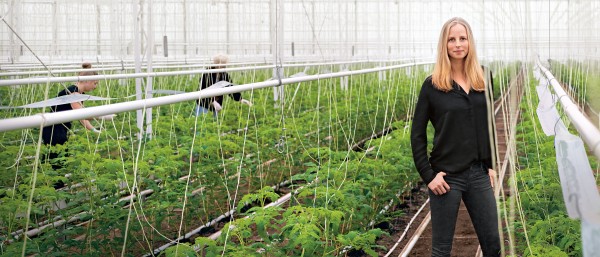
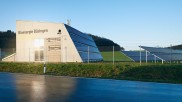
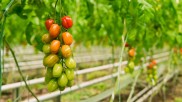
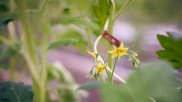
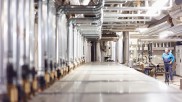
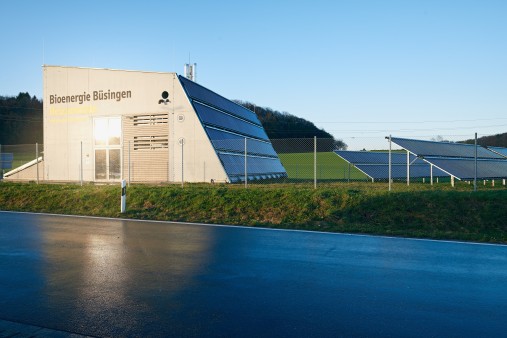
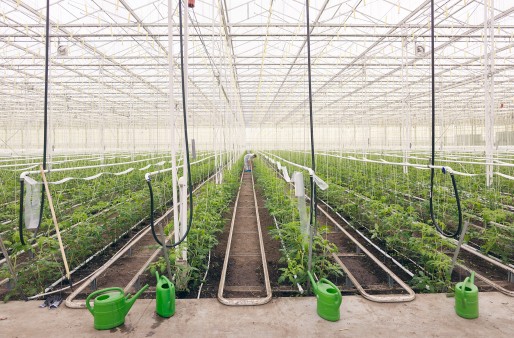
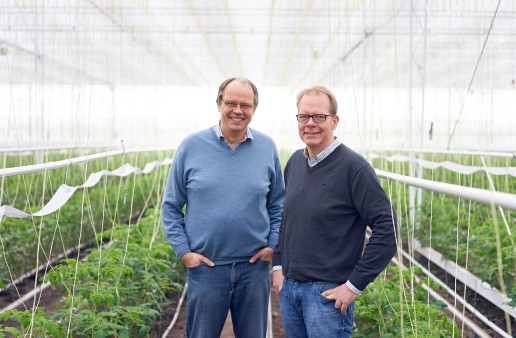
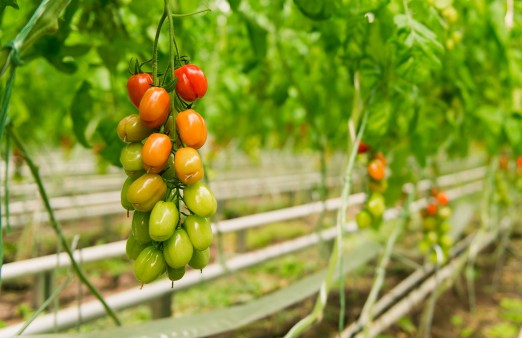
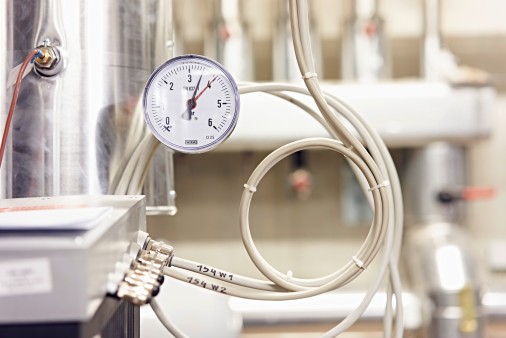
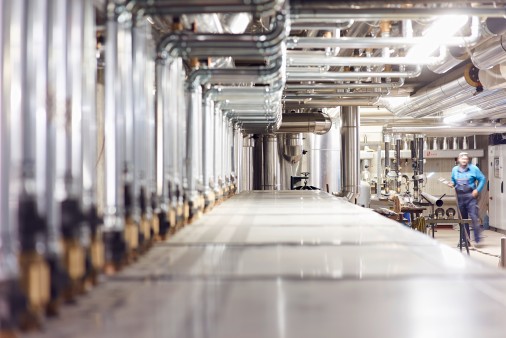






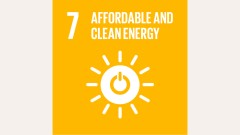
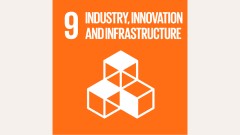
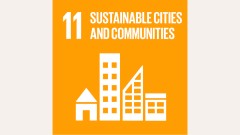
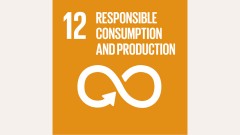
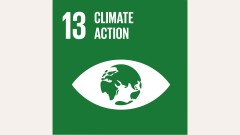

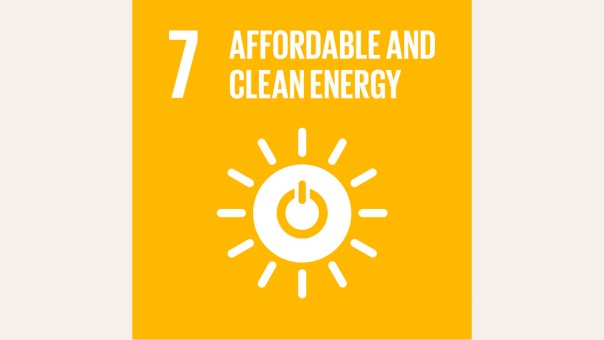
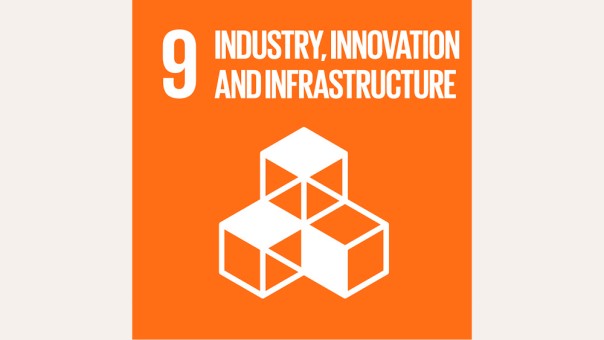
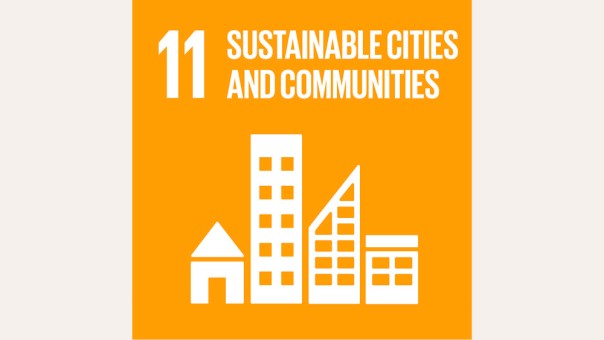
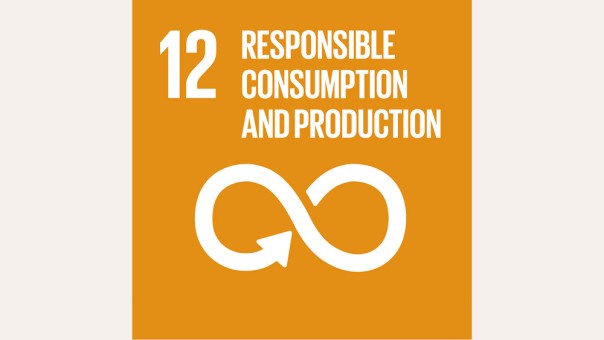
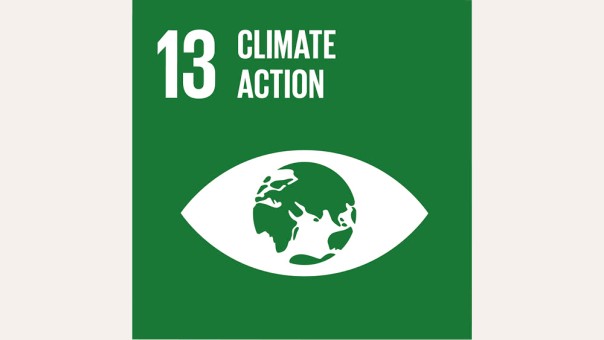

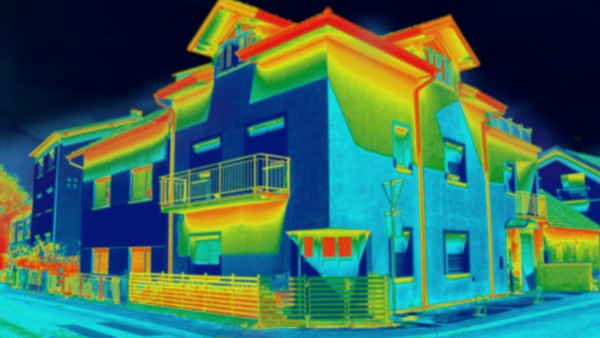
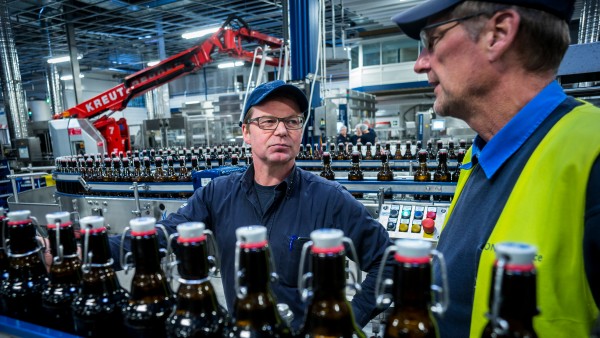
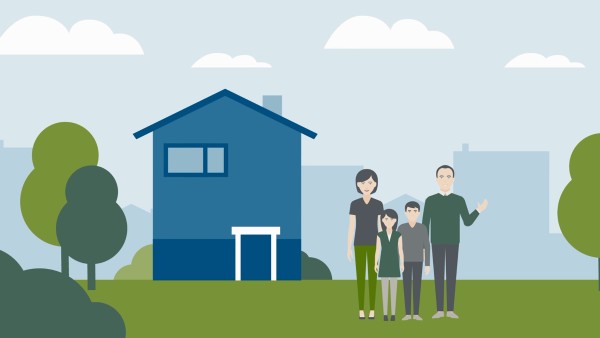
Data protection principles
If you click on one of the following icons, your data will be sent to the corresponding social network.
Privacy information